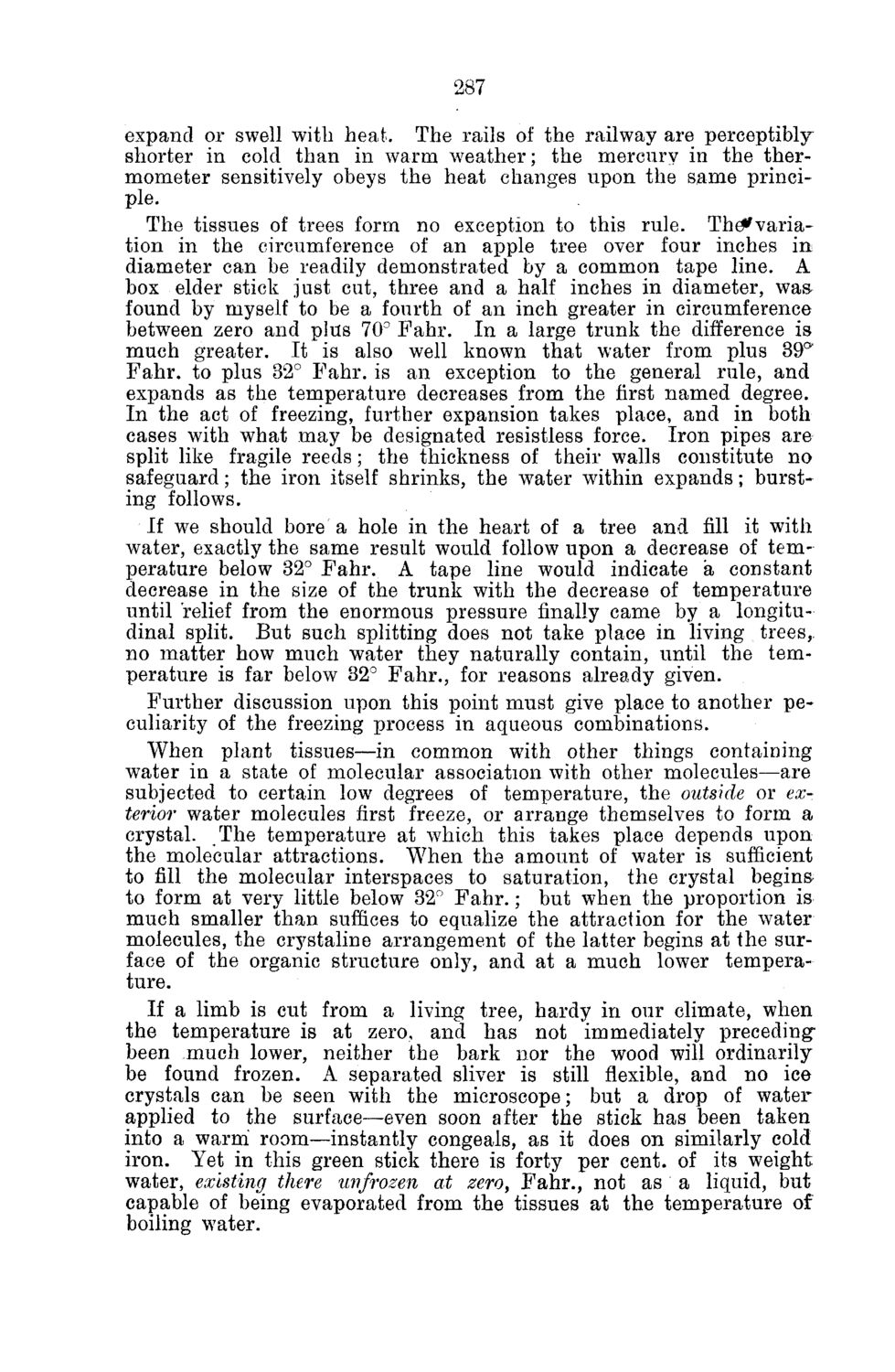| |
| |
Caption: Board of Trustees Minutes - 1886
This is a reduced-resolution page image for fast online browsing.

EXTRACTED TEXT FROM PAGE:
287 expand or swell with heat. The rails of the railway are perceptibly shorter in cold than in warm weather; the mercury in the thermometer sensitively obeys the heat changes upon the sarne principle. The tissues of trees form no exception to this rule. Th#varia~ tion in the circumference of an apple tree over four inches in diameter can be readily demonstrated by a common tape line. A box elder stick just cut, three and a half inches in diameter, was found by myself to be a fourth of an inch greater in circumference between zero and plus 70° Fahr. In a large trunk the difference is much greater. It is also well known that water from plus 39^ Fahr. to plus 32° Fahr. is an exception to the general rule, and expands as the temperature decreases from the first named degree. In the act of freezing, further expansion takes place, and in both cases with what may be designated resistless force. Iron pipes are split like fragile reeds; the thickness of their walls constitute no safeguard; the iron itself shrinks, the water within expands; bursting follows. If we should bore a hole in the heart of a tree and fill it with water, exactly the same result would follow upon a decrease of temperature below 32° Fahr. A tape line would indicate a constant decrease in the size of the trunk with the decrease of temperature until relief from the enormous pressure finally came by a longitudinal split. But such splitting does not take place in living trees,no matter how much water they naturally contain, until the temperature is far below 32° Fahr., for reasons already given. Further discussion upon this point must give place to another peculiarity of the freezing process in aqueous combinations. When plant tissues—in common with other things containing water in a state of molecular association with other molecules—are subjected to certain low degrees of temperature, the outside or exterior water molecules first freeze, or arrange themselves to form a crystal. The temperature at w7hich this takes place depends upon the molecular attractions. When the amount of water is sufficient to fill the molecular interspaces to saturation, the crystal begins to form at very little below 32° F a h r . ; but when the proportion is much smaller than suffices to equalize the attraction for the water molecules, the crystaline arrangement of the latter begins at the surface of the organic structure only, and at a much lower temperature. If a limb is cut from a living tree, hardy in our climate, when the temperature is at zero, and has not immediately precedingbeen much lower, neither the bark nor the wood will ordinarily be found frozen. A separated sliver is still flexible, and no ice crystals can be seen with the microscope; but a drop of water applied to the surface—even soon after the stick has been taken into a warm room—instantly congeals, as it does on similarly cold iron. Yet in this green stick there is forty per cent, of its weight water, existing there unfrozen at zero, Fahr., not as a liquid, but capable of being evaporated from the tissues at the temperature of boiling water.
| |